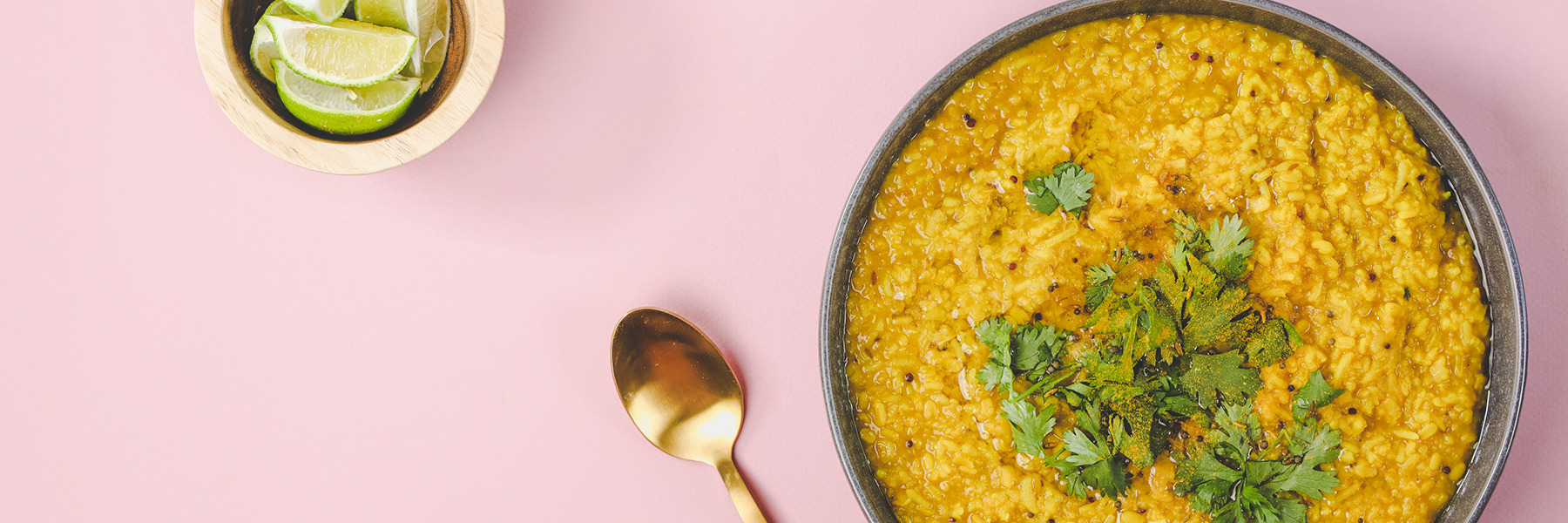Healthy Digestion secrets from Ayurveda
Following Ayurveda’s secrets has drastically improved my digestion
1. Start your meal with a small piece of fresh ginger and a pinch of salt.
Ginger is an Ayurvedic herb with many wonderful digestion-promoting properties. It’s especially helpful for those of us who experience tastelessness or constipation, as well as recurring coughs and colds. Those who may also be experiencing bleeding and/or burning sensations, however, are warned against consuming fresh ginger.
Salt is another digestion stimulant — Ayurveda recommends rock salt, as it has the added benefits of supporting the eyes and heart, without producing burning sensations.
2. Eat warm food and drink warm water.
So many of my clients and students have observed how their digestion starts to immediately improve when they make the switch from cold to warm water and from raw food to warm meals. Why is this? The digestive system is thought of as being similar to a fire in Ayurveda. Like any fire, the digestive system also gets “extinguished” when we toss cold substances into it. The digestive system is ignited by warm foods and beverages.
3. View eating as a sacred experience each time.
We learn from Ayurveda’s vast wisdom the importance of viewing eating more reverently. This means making the time to sit quietly before meals and feel a sense of connection with and gratitude for our food. Sitting quietly to eat versus eating on the go, in front of the screen (television, computer, or phone), or while doing other things makes a world of a difference in terms of digestive health.
Having struggled with eating disorders as a teenager, I experienced a great transformation in my physical and psychological health when I began to view my body as my temple, and saw eating as a way to make offerings to this sacred inner abode. Making eating a sacred experience each time also means slowing down to eat, really chewing the food, and feeling the subtle nuances of every flavor and texture.
4. Sit on your knees after eating.
Sacred eating also means not immediately running around after eating. Yoga is the sister science of Ayurveda, so it’s highly beneficial to sit in Vajrasana (a yogic pose that involves sitting on your knees with your hips resting on your heels and toes ideally touching). Even if you can’t sit in Vajrasana, it helps tremendously to simply sit up straight and close your eyes after eating for a few minutes. Visualize your food getting beautifully digested into nourishment that will give you strength, energy and vitality.
5. Cook with Ayurvedic digestive spices.
There’s a plethora of digestive spices in the Ayurveda tradition that can be added to a variety of foods to make them more digestible. Cumin seeds, fenugreek seeds, ajwain seeds, and a pinch of asafetida are wonderful spices to add to your meals. Each of these helps stimulate digestive fire and prevents gas and bloating after eating.
6. Wait to eat until your previous food is digested.
Snacking is compelling, especially with so many people living constantly on the go. Being busy can make snacking an unconscious habit. The danger is that the digestive system doesn’t receive adequate time to process we’ve just eaten, which becomes a liability to our body and leads to a number of digestive disturbances.
You will experience physical lightness, enthusiasm, hunger and general comfort in the body when your previous food has been digested. Only once you receive all of these signals should you proceed to eat more.
7. Avoid eating when feeling emotionally charged.
Emotions are like food in the sense that if they aren’t properly digested, they can become harmful to us. Calm down from intense feelings, such as anger, grief and anxiety, before eating. In other words, don’t eat while you’re in the heat of a loaded moment.

